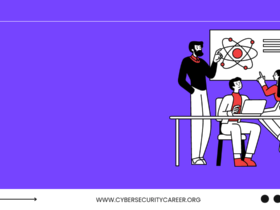A risk manager is a critical role in any organization, charged with assessing and managing the risks associated with various business activities. As we head into an ever-changing world, risk management is more important than ever. In this blog post, we will explore what it takes to become a risk manager and provide some tips on how to get started. By understanding the basics of risk management, you can make informed decisions that will keep your business safe.
What is risk management?
Risk management is the process of identifying, assessing, and controlling the risks that affect an organization’s mission, goals, and objectives. It involves both anticipating potential risks and mitigating them when they occur. Risk management helps organizations stay in control and maximize their opportunities while minimizing the chances of serious harm or loss.
One of the most important aspects of risk management is understanding the different types of risks. There are three main types of risks: operational, financial, and legal. Operational risks involve exposures to events that could negative impact an organization’s ability to provide services or conduct business activities. Financial risks involve exposures to economic factors such as interest rates, stock prices, and currency values. Legal risks involve exposures to litigation issues or other legal proceedings that could have a negative impact on an organization’s bottom line.
Once you’ve identified the different types of risk your organization is exposed to, you need to assess them. This involves calculating the likelihood and severity of each risk event, as well as estimating how much it would cost your organization if it happened. Next, you need to determine which risks are worth taking on given your company’s resources and priorities. Finally, you need to put in place measures to prevent or mitigate any adverse impacts from risk events that do occur.
Risk management is an essential part of any successful business operation. By properly managing Risk your company can ensure a safe environment for employees while maximizing its chances for success.
Types of risks
There are many different ways to become a risk manager. Some people may want to pursue a career in risk management after completing an undergraduate degree in business or accounting. Others may want to learn about and manage risks through continuing education courses or professional organizations.
Regardless of how someone becomes a risk manager, there are several key skills that are necessary for the job. Risk managers need to be able to think strategically and assess risks carefully. They also need to be able to communicate their findings effectively so that stakeholders can make informed decisions. Finally, risk managers must be willing and able to work with a range of people and disciplines, which can often make the job difficult.
How to become a risk manager?
There are a few things that you need to do in order to become a risk manager. First and foremost, you need to have a strong understanding of risk. Risk is the probability of something happening, and it can be measured in different ways.
Second, you need to have experience managing risks. This means that you have worked with risks before and know how to identify them, assess their potential impact, and take appropriate action.
Third, you need to have strong leadership skills. A risk manager needs to be able to lead teams in taking appropriate action when risks arise.
Fourth, you need to be able to communicate effectively with stakeholders. Risk managers must be able to clearly explain risks and why they matter so that everyone can understand and agree on the best course of action.
The different steps in risk management
Different steps in risk management are:
- Define the risks and their potential consequences.
- Identify the sources of risk and assess their impact.
- Establish a risk management plan that will reduce or eliminate the risks to an acceptable level.
- Monitor and review the effectiveness of the risk management plan on a regular basis.
- Take action if risks continue to pose a threat to organizational objectives
Risk manager requirements, skills, and experience
The role of risk management is to identify and assess potential risks, ensure that risk exposures are managed effectively, and mitigate or avoid potential negative outcomes. A successful risk manager must have a solid understanding of financial accounting, business operations, and risk assessment techniques. They should also have experience managing projects and working with stakeholders.
According to the Bureau of Labor Statistics, a Risk Manager typically requires at least a bachelor’s degree in business or a related field and 4 years of relevant work experience. Some employers may also require certification from such organizations as the Project Management Institute (PMI).
Risk manager job description
A risk manager is responsible for managing the risks associated with a company’s operations. This includes identifying, assessing, and mitigating potential threats to the company’s assets. In order to qualify for this position, candidates must have experience in finance, business administration, or risk management.
The risk manager typically works alongside other members of the management team to ensure that the company’s operations are as safe as possible. They must be able to quickly assess a situation and come up with a plan of action to minimize potential damage. In addition, they are responsible for tracking and reporting on the progress of their department’s risk management efforts.
Certificates or Special Training Required for Risk Managers
There is no one-size-fits-all answer to this question, as the requirements and qualifications for risk management vary based on the organization and its specific risk exposures. However, some common requirements include a degree in business, accounting, or a related field; experience in risk assessment and management; and certification from organizations such as the American Institute of Certified Public Accountants (AICPA) or the Society for Risk Analysis (SRA).
In order to be effective in managing risks, risk managers typically need to have strong analytical skills. They should also be able to identify potential risks and assess their severity. In addition, they must have knowledge about financial modeling and analysis, insurance principles, legal considerations, human resources management, information security policies, and other relevant topics. Finally, many risk managers require specialized training that can include courses on Risk Assessment Methodologies (RAM), Financial Modeling Techniques (FMT), Insurance Principles & Practices (IPP), Business Continuity Planning & Management (BCPM), Information Security Fundamentals (ISF), or another area of expertise.
How much do risk managers make?
Risk management is a growing profession with good salaries and benefits. According to the website Payscale, risk managers typically earn an annual salary of $110,000 to $140,000. The website also states that risk managers can expect bonuses and other benefits that can add up to 10 percent of their salary.
Conclusion
If you are looking to become a risk manager, there are a few things you need to do. First, you will need to understand the basics of risk and how it can be used in business. Second, you will need to learn how companies assess and manage risk. And finally, you will need to develop your skills in financial analysis and crisis management. By following these steps, you can begin preparing yourself for a career as a risk manager.










Leave a Reply